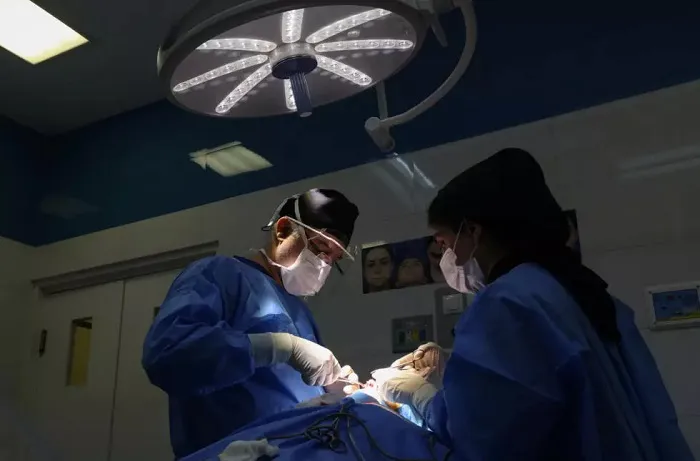For many Iranian women like Azad, smoothing out the “Persian nose” is more than a beauty choice — it is a lucrative investment. Since the 1979 Islamic Revolution, women in Iran have been required to dress modestly and cover their hair, which has shifted the beauty focus primarily to the face.
Azad, a 29-year-old model who asked to withhold her last name due to social pressures, told AFP that rhinoplasty, or nose surgery, dramatically changed her life. “After the surgery, not only did I get higher-status modeling jobs, but my income tripled and clients respected me more,” she said.
The Popularity of Rhinoplasty in Iran
According to the International Society of Aesthetic Plastic Surgeons (ISAPS), Iran performed over 264,000 cosmetic surgeries in 2023, with rhinoplasty being the most common procedure. In Tehran and other cities, colorful billboards promote clinics promising perfect noses, skin, and teeth. The streets often reveal people with bandaged noses, a common sign of recent surgery.
“It’s become a cultural trend,” said Hamidreza Hosnani, a rhinoplasty surgeon who performs up to 20 surgeries a week at his clinic in Tehran. He notes that the trend increasingly reflects social identity and status, especially as more women challenge the country’s strict dress codes.
Social and Political Context Driving the Trend
The defiance of strict dress codes became more visible after the 2022 death of 22-year-old Kurdish woman Mahsa Amini in custody, which sparked mass protests across Iran. Amid these social changes, cosmetic surgery serves as a way for many Iranians to express individuality.
However, the financial cost remains a challenge. Iran’s minimum wage is about $100, while a basic rhinoplasty can cost up to $1,000 — cheaper than in many other countries but still a significant expense for most Iranians. Many, like Azad, have had to borrow money from friends and family to afford the procedure. “It was well spent, totally worth it,” she said.
Personal Stories Behind the Surgery
Reyhaneh Khoshhali, a 28-year-old surgical assistant who had rhinoplasty four years ago, expressed regret about not having the surgery sooner. “My nose was really ugly, and I wanted to be prettier,” she said. “If I could go back, I would have done it a long time ago.”
Meanwhile, others are more cautious. Ava Goli, 23, has not yet undergone rhinoplasty and worries about the risks. “I’ve seen some people whose noses don’t look good… Yes, sometimes it does scare me,” she told AFP.
Risks and Regulatory Challenges
Iran boasts highly advanced medical centers and has become a destination for affordable, quality cosmetic surgeries. However, the rise in unauthorized cosmetic clinics poses significant dangers.
Iranian authorities have repeatedly warned about the growing number of unlicensed practitioners. In February, over a dozen unauthorized cosmetic surgeons were arrested, and several operating rooms at Tehran’s Apadana Hospital were shut down, according to the Ministry of Health.
Tragically, on November 7, 2023, three women died in Tehran from cosmetic surgery complications on the same day, highlighting the risks involved.
Growing Demand Among Men
The pressure to undergo cosmetic procedures is not limited to women. Bahador Sayyadi, a 33-year-old accountant, shared how he borrowed money for a hair transplant. “My financial situation is not good, but thanks to a recent loan I was able to get the surgery done in time for my wedding,” he said. “Now men should also take care of themselves like women.”
Rhinoplasty in Iran is more than a cosmetic choice; it is a social and cultural phenomenon influenced by political restrictions, economic pressures, and evolving ideas of beauty and identity. While demand continues to rise, so do concerns about safety and regulation in this booming industry.
You Might Be Interested In:
- Kailyn Lowry Felt ‘Uncomfortable’ After Abdominal Surgery
- ‘Love Is Blind’ Star Chelsea Blackwell On Tummy Tuck Surgery
- Kristi Nome’s Facial Transformation Is Remarkable


